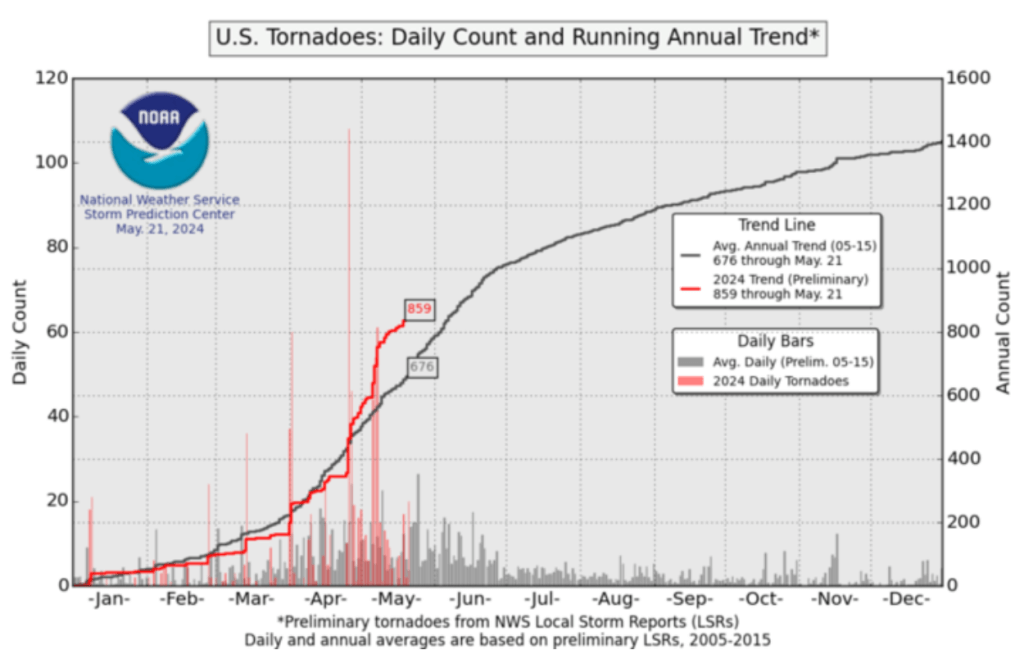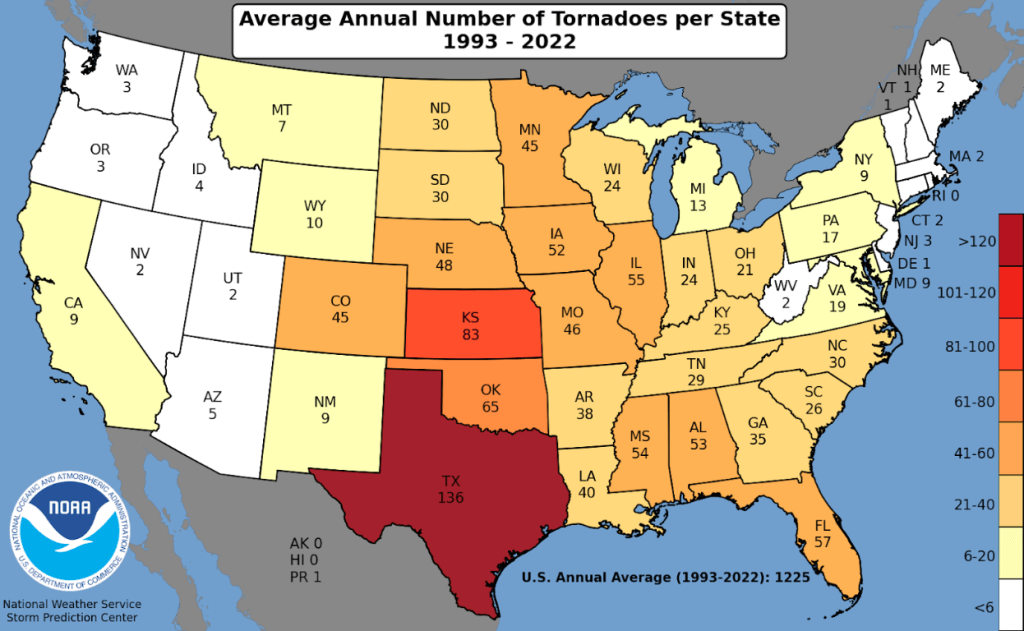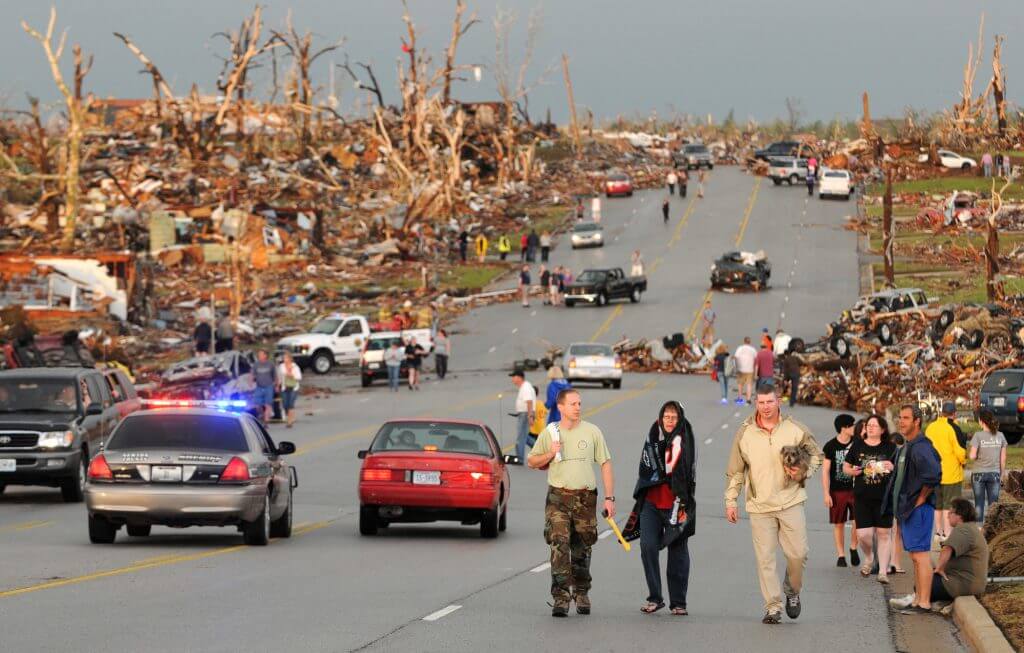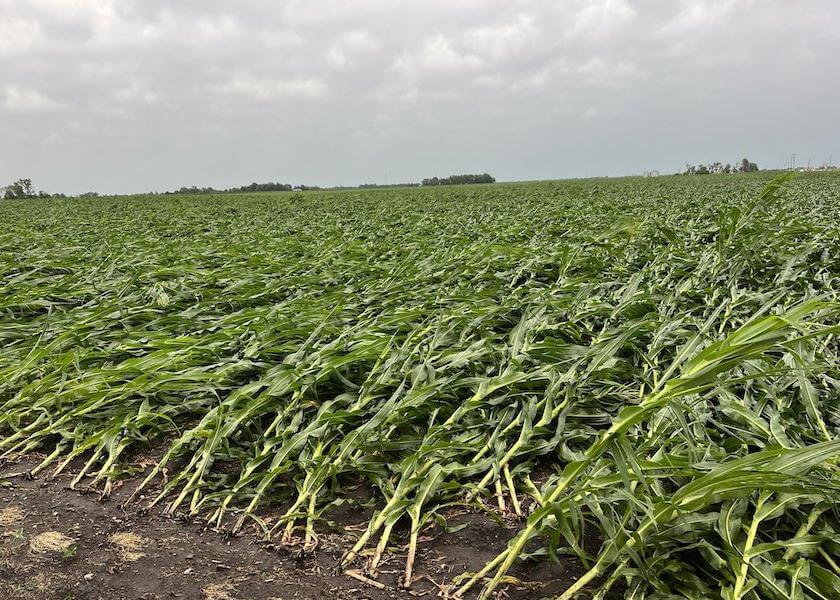It seems that this severe weather season has been notably active so far, as there have been few days without some type of severe risk around the country. However, in terms of observed reports, wind and hail reports are both right around normal compared to the last ten years. Confirmed tornadoes, however, are trending WELL above normal, with 859 tornadoes as of May 21.
This is the third most active start to the severe weather season since 2010 for tornadoes, falling just behind 2017, but still well under the record breaking season in 2011. On average, there are typically 676 tornadoes reported in the United States by this date, so we’re nearly 200 tornadoes above normal.

The top five tornado states so far this year have been Iowa (82), Texas (74), Kansas (66), Ohio (66), Missouri (62), and Oklahoma (62). Normally Oklahoma and Texas are active with tornadoes as they are in Tornado Alley, however, many other states have been abnormally active. Indiana currently sits in 11th place with 35 tornadoes when the state normally only sees 24 tornadoes over the entire year.

So, what is driving this active severe season?
Right now we are in a transition from El Nino to La Nina. La Nina typically supports a more active severe weather pattern, while El Nino can cause drier conditions across the country, similar to the dry May last year
With a La Nina pattern, temperatures in the Pacific Northwest fall below normal, causing the jet stream to dip from the north to the middle of the county. The jet stream is the river of air that separates the cold air from the warm air and this battle is what often causes storms.

Heat domes are also more prone to set up. When this happens, storm systems are able to ride around the dome. This is what we often refer to as “the ring of fire”, and we will have to monitor for more active severe threats this summer if/when a heat dome sets up. Ultimately, this likely means the active 2024 severe weather season persists as we work into June, July and August.
Severe weather has a huge effect on life, both physically and mentally. There has been great destruction caused across the country due to tornadoes, hail, and damaging winds. Life has also been lost due to these storms. There have been 17 fatalities from tornadoes so far this year. Last year 83 people were killed.

When severe weather impacts an area, life is changed. Whether that means getting a new roof, cutting up trees, or rebuilding an entire house, all severity of impact creates an impact on life.
If the ring of fire pattern sets up, tornadoes are still a possibility, but damaging winds become the greatest threat. This causes potential problems for crops, property, life, etc. (like the flattened corn in the image below).

